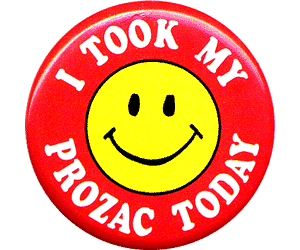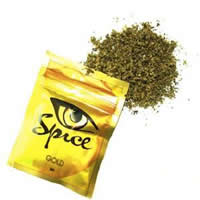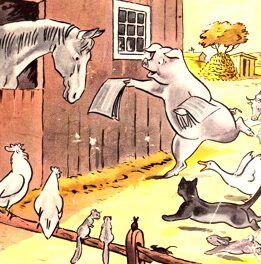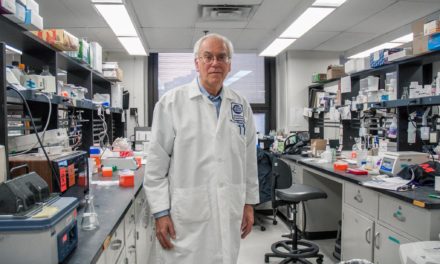By Fred Gardner
12/4/21 If Ethan Crumbley was a marijuana user, that fact would have been publicized by now —or will soon become known. If he was on Prozac or some other pharmaceutical concoction, we may never know because “medical privacy” trumps public health and public safety.
Already the coverage from Michigan is focusing on his parents’ politics, not the kid’s mental state. The grown-up Crumbleys were obdurate when the school told them Ethan needed counseling —but it’s possible the family doctor had prescribed an SSRI for their unhappy 15-year-0ld. More than one in 20 teenage boys in the US are on anti-depressants —and more than one in 10 teenage girls.
Evidence that Prozac induces suicidal ideation and bizarre flip-outs emerged when Eli Lilly was conducting clinical trials in the mid-1980s. The relevant episodes were misrepresented to the Food & Drug Administration, which granted marketing approval in December, 1988, with no warning required on the package. After a drug is marketed, only a tiny fraction of the adverse events it induces get reported to the FDA. Patients have to tell their doctors, who then have to file paperwork with the manufacturers, who then have to voluntarily tell the FDA that their products are dangerous. Thus only about 1% of the adverse events get reported.
Among the adverse events brought on by Prozac soon after it hit the market were numerous suicides and homicides, some of which resulted in legal action by the victims or survivors. Lilly’s strategy was to conceal the trend by settling every case out of court. One of the first to capture national attention involved Joseph Wesbecker, a Louisville, Kentucky printing press operator who, on Sept. 14, 1989, killed eight co-workers with an AK-47 and injured a dozen others before committing suicide. Wesbecker had been prescribed Prozac five weeks before and his psychiatrist, noting that Wesbecker had become “very, very agitated,” told him to stop taking it on Sept. 11. Victims who survived the shooting, relatives of those who died, and members of Wesbecker’s family subsequently sued Eli Lilly, charging that the company “knew or should have known that users of Prozac can experience intense agitation and preoccupation with suicide, and can harm themselves or others.”
In February, 1990 psychiatrists Martin Teicher and Jonathan Cole and nurse Carol Glod published “Emergence of intense suicidal preoccupations during fluoxetine treatment” in the American Journal of Psychiatry. It described six patients who developed “intense, violent suicidal preoccupations” within two to seven weeks of starting treatment with Prozac. The authors estimated that between 1.9 and 7.7 percent of Prozac users would develop suicidal obsessions. Teicher and his co-workers subsequently reported that Prozac patients were “at least three-fold more likely to develop new suicidal ideation” than patients treated with the older antidepressants, and that patients were also more likely to develop suicidal thoughts for the first time ever while taking Prozac.
Lilly responded, “Our experience does not show a cause and effect relationship between our products and suicidal or violent thoughts or acts. Unfortunately, these thoughts and acts are part of the disease of depression.” But the company made its first small concession, noting on the Prozac label in May, 1990, that “suicidal ideation” and “violent behavior” had been reported (as had pancreatitis) as side-effects. This reference appeared in the “Postintroduction Reports” section towards the bottom of the label. No mention of suicidal ideation was added to the “Precautions” section.
The FDA held a hearing in September 1990 at which its Psychotropic Drugs Advisory Committee (most of whose members got funding from antidepressant manufacturers) considered whether “Selective” Serotonin Reuptake Inhibitors (SSRIs) can induce violent and suicidal thoughts. They voted 9-0 not to recommend a more prominent warning and 6-3 not to recommend a warning in small type that would have read, “In a small number of patients, depressive symptoms have worsened during therapy, including the emergence of suicidal thoughts and attempts. Surveillance throughout treatment is recommended.”
As evidence linking SSRIs to suicide homicide kept mounting, Lilly and the other antidepressant manufacturers made a few finite, begrudging concessions. A turning point came in April 2004, when the British Medical Journal reported that GlaxoSmithKline had concealed data showing that Paxil more than quadrupled suicidal ideation among teenagers. A few months later the FDA acknowledged a study showing that SSRI use induced suicidal thoughts in two out of 100 adolescents and ordered a black box warning. Prozac sales dipped as a result and Lilly et al commissioned the study that JAMA published April 18, showing that SSRI use induces suicidal ideation in only one in 100. Suicidal ideation,” “Suicide gesture,” “Suicide attempt,” and other such terms do not accurately characterize the extremely bizarre flip-outs induced by SSRIs. Carefully planning to annihilate the student body fits the profile. Biting your mother 57 times. Driving your car around in circles until you smash into a tree… Years ago, at a meeting of the Prozac Survivors Support group that I covered for the Anderson Valley Advertiser, Bonnie Leitsch, a flamboyant redhead from Louisville who sounded like Minnie Pearl, tried to explain what Prozac did to her thinking:
“It’s hard for people to understand. They say ‘you must know what you’re doing,’ but you do not. You cannot distinguish reality. I could never tell if I was awake or asleep. That was the hardest thing for me to determine. I would lay down in bed and I would think ‘Now am I dreaming this or am I awake and doing this?” My mind constantly ran, it never would stop. I could be having this conversation with you and the whole time if I was drinking coffee, I could be thinking about running it on my hand and wondering what it would feel like. Thinking irrational thoughts. And yet still able to communicate at what would appear to be a rational level. That’s why I think psychiatrists and psychologists and doctors who are dealing with people on Prozac are totally oblivious to what’s going on. These people are the best liars in the whole world in terms of being able to come to you and say ‘I’m fine.’ But the whole time they might be thinking ‘I wonder what it would feel like to stick this knife in my hand?’ And, ‘I can take on a motorcycyle gang and kill ’em all.’ Most of these people on Prozac like myself lose all natural ability to love. It becomes a spiritual dullness. You cease to know right from wrong. Because there’s no wrong and you’re right 100 percent and the hell with the rest of you.”
On that fatal morning in Michigan, Ethan Crumbley wrote a note that his teacher found. As described by the NY Times Dec. 4, “The note contained the following: a drawing of a semiautomatic handgun, pointing at the words: “’The thoughts won’t stop. Help me.’ In another section of the note was a drawing of a bullet, with the following words above that bullet: ‘Blood everywhere.’ Between the drawing of the gun and the bullet is a drawing of a person who appears to have been shot twice and bleeding. Below that figure is a drawing of a laughing emoji. Further down the drawing are the words, ‘My life is useless.’ And to the right of that are the words, ‘The world is dead.’
In 1994 Alexander Cockburn and I wrote an expose that the LA Times spiked, describing how Lilly and the other manufacturers of SSRIs had denied and were still trying to suppress the fact that these chemicals can induce bizarre flip-outs. Lilly succeeded in preventing the FDA from putting a “black box” warning on the Prozac package until 2004. The moral of the story is: the house always comes out ahead.
Every so often a critic of Big Pharma is allowed to make a peep. In 2017, after the British Medical Journal published a paper pooh-poohing the evidence linking SSRIs to suicide and homicide, they ran a note of protest hedded “Antidepressants and Murder: Case not Closed” by Peter C. Gøtzsche, MD, a Danish epidemiologist. He concluded: “Looking at precursor events to suicide and violence is just like looking at prognostic factors for heart disease. We say that increased cholesterol, smoking and inactivity increase the risk of heart attacks and heart deaths and therefore recommend people to do something about it. Psychiatric leaders, however, routinely try to get away with untenable arguments. Many say, for example, that antidepressants can be given safely to children arguing that there were no more suicides in the trials, only more suicidal events, as if there was no relation between the two, although we all know that a suicide starts with suicidal thoughts, followed by preparations and one or more attempts. The same can be said about homicide. It can no longer be doubted that antidepressants are dangerous and can cause suicide and homicide at any age. It is absurd to use drugs for depression that increase the risk of suicide and homicide when we know that cognitive behavioural therapy can halve the risk of suicide in patients who have been admitted after a suicide attempt and when psychotherapy does not increase the risk of murder.”
The upside of being ignored is that your warning stays relevant.





